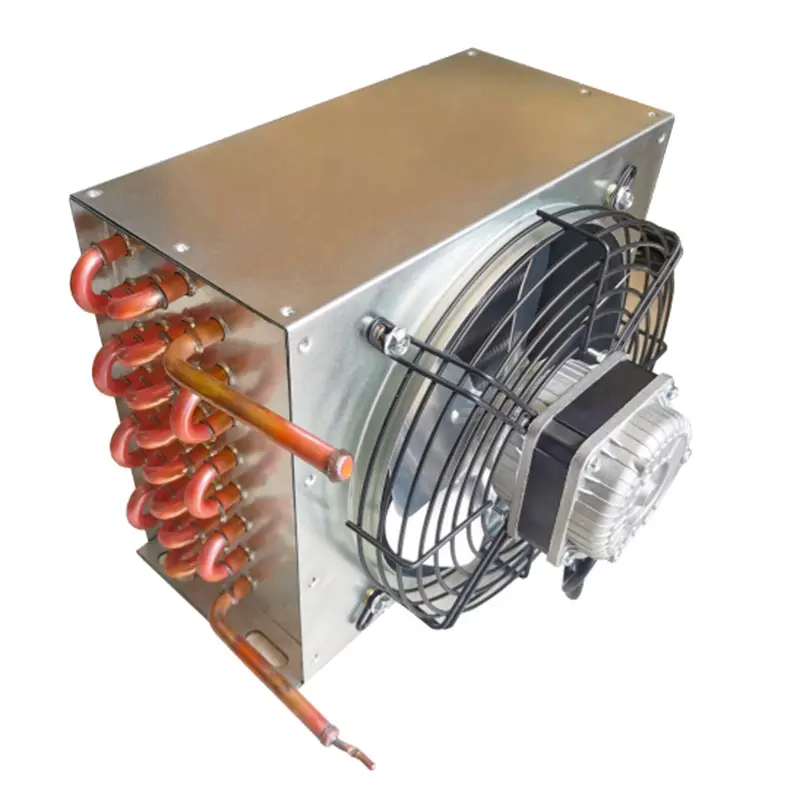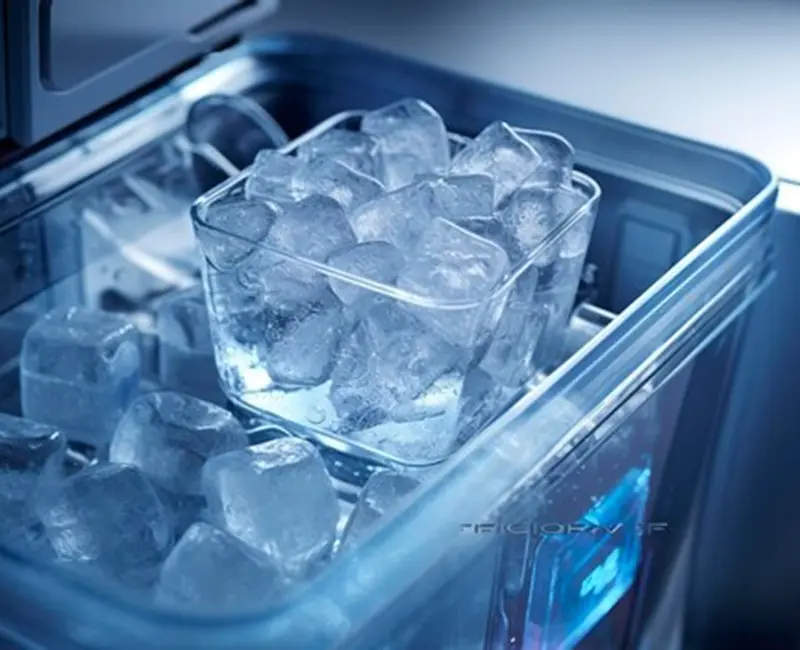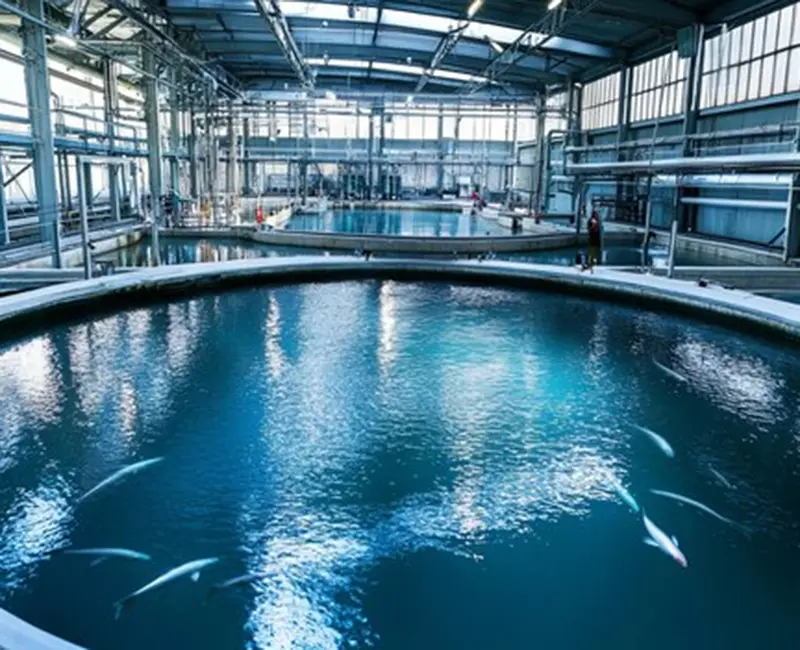How Can Copper Tube Aluminum Fin Heat Exchangers Reduce Operational Costs in Refrigeration Systems?

When I evaluate refrigeration systems, Copper Tube Aluminum Fin Heat Exchangers stand out as a game-changer for operational cost reduction. Their design combines copper tubes, known for superior thermal conductivity, with aluminum fins that maximize heat dissipation while keeping the structure lightweight. This synergy enhances energy efficiency and simplifies maintenance, resulting in tangible savings.
Ningbo Senjun New Materials Co., Ltd. specializes in crafting these advanced Copper Fin Heat Exchangers. Their expertise spans applications like refrigerators, freezers, and medical ultra-low temperature units. By leveraging their innovative designs, businesses can optimize refrigeration performance while minimizing expenses.
📊 Operational Savings Snapshot
Metric : Reduction Percentage
Internal tube volume : Up to 41%
Coil footprint : 57%
Refrigerant charge : Significantly lowered
These statistics highlight the efficiency gains achievable with Copper Tube Aluminum Fin Heat Exchangers. Their lightweight design and durability further contribute to long-term cost savings, making them indispensable for modern refrigeration systems.
Key Takeaways
- Copper Tube Aluminum Fin Heat Exchangers save energy, cutting bills by 30%.
- Strong materials last longer, needing fewer repairs and less upkeep.
- Their small, light design makes setup simple and saves work time.
- Regular care keeps them working well, avoiding breakdowns and saving energy.
- Picking a trusted maker like Ningbo Senjun ensures good, custom products.
Key Features of Copper Tube Aluminum Fin Heat Exchangers

Design and Material Composition
Copper Tubes for Superior Heat Conductivity
When I evaluate the performance of Copper Tube Aluminum Fin Heat Exchangers, the copper tubes stand out as a critical component. Copper's thermal conductivity, measured at 231 Btu/(hr-ft-F), is among the highest of all metals, second only to silver. This exceptional conductivity ensures rapid and efficient heat transfer, which is essential for refrigeration systems. Additionally, copper's corrosion resistance makes it ideal for environments involving fluids, as it minimizes the risk of degradation over time.
Another advantage of copper is its antimicrobial properties. These properties inhibit the growth of bacteria, fungi, and viruses, leading to cleaner surfaces and improved air quality in HVAC systems. This feature enhances the overall functionality and hygiene of the heat exchangers.
Aluminum Fins for Lightweight and Efficient Heat Dissipation
The aluminum fins in these heat exchangers are precisely engineered with uniform spacing. This design facilitates optimal airflow and maximizes heat dissipation. Aluminum's lightweight nature further reduces the overall weight of the heat exchanger, making it easier to handle and install. Despite being lighter than copper, aluminum complements the copper tubes effectively, creating a balance between performance and practicality.
Key Design Features
Feature : Description
Copper Tubes : Made of high-quality copper material, with good thermal conductivity and corrosion resistance.
Aluminum Fins : Precisely processed with uniform fin spacing, facilitating air flow and heat transfer.
Connection Method : Advanced welding technology is used between copper tubes and aluminum fins for strong connections.
Durability and Corrosion Resistance
How Material Selection Extends Lifespan
The durability of Copper Tube Aluminum Fin Heat Exchangers is a direct result of their material composition. Copper's resistance to corrosion, especially in humid or salty environments, ensures a longer lifespan. This makes it a reliable choice for refrigeration systems operating under challenging conditions. While aluminum is more prone to corrosion, the advanced welding techniques used by manufacturers like Ningbo Senjun New Materials Co., Ltd. mitigate this issue, ensuring a robust connection between the copper tubes and aluminum fins.
Resistance to Environmental Factors
Copper's ability to withstand environmental factors such as moisture and temperature fluctuations further enhances the durability of these heat exchangers. Its resistance to galvanic corrosion, which occurs when dissimilar metals come into contact, ensures that the system remains functional and efficient over time. This durability translates to fewer replacements and repairs, reducing long-term operational costs.
Compact and Lightweight Design
Space-Saving Benefits
The compact design of Copper Tube Aluminum Fin Heat Exchangers is particularly advantageous in refrigeration systems. It allows for effective use of limited space, which is crucial in environments like supermarkets or medical facilities where every square foot counts. This space-saving feature not only optimizes system layout but also simplifies integration into existing setups.
Ease of Installation and Transport
The lightweight nature of these heat exchangers, thanks to the use of aluminum fins, makes them easy to transport and install. This reduces labor costs and minimizes the time required for setup. Companies like Ningbo Senjun New Materials Co., Ltd. have perfected the design and manufacturing process, ensuring that their products are both efficient and user-friendly.
Mechanisms for Cost Reduction
Improved Energy Efficiency
Enhanced Heat Transfer Reduces Energy Consumption
I’ve observed that Copper Tube Aluminum Fin Heat Exchangers excel in energy efficiency due to their superior heat transfer mechanisms. Copper’s exceptional thermal conductivity ensures rapid heat transportation, while the aluminum fins increase the heat exchange surface area, promoting optimal dissipation. This combination minimizes energy loss, allowing refrigeration systems to operate at peak performance with less power consumption.
Key Mechanisms for Energy Efficiency
Mechanism : Description
Thermal Conductivity of Copper : Copper's excellent thermal conductivity ensures quick and efficient heat transportation through conduction.
Heat Exchange Surface Area : Aluminum fins increase the heat exchange surface area, promoting optimal heat dissipation.
Durability and Corrosion Resistance : Copper and aluminum provide durability and resistance to corrosion, extending the lifespan of the system.
Lower Energy Bills in Refrigeration Systems
By improving heat transfer efficiency, these heat exchangers reduce the workload on compressors and other components. This translates to lower energy consumption and, ultimately, reduced electricity bills. Businesses using refrigeration systems, such as supermarkets or medical facilities, can see significant savings over time. Ningbo Senjun New Materials Co., Ltd. designs these exchangers with precision, ensuring maximum energy efficiency for various applications.
Reduced Maintenance Costs
Durable Materials Minimize Repairs
The durability of Copper Tube Aluminum Fin Heat Exchangers plays a crucial role in reducing maintenance costs. High-grade materials like copper and aluminum resist corrosion, fouling, and scaling. This durability minimizes the need for frequent repairs or replacements. Additionally, these materials help maintain optimal temperatures, reducing risks of overheating or freezing, which could damage other system components.
Simplified Cleaning and Maintenance Processes
I’ve found that the design of these heat exchangers simplifies cleaning and maintenance. Their compact structure allows for easy disassembly, making routine inspections and cleaning more efficient. This prevents costly breakdowns and ensures the system operates smoothly. Ningbo Senjun New Materials Co., Ltd. incorporates advanced manufacturing techniques to enhance the reliability and ease of maintenance of their products.
Material and Manufacturing Cost Savings
Aluminum as a Cost-Effective Material
Aluminum’s affordability makes it an ideal choice for heat exchanger fins. Despite its lower cost, aluminum delivers excellent performance in terms of heat dissipation and weight reduction. This balance between cost and efficiency makes Copper Tube Aluminum Fin Heat Exchangers a cost-effective solution for refrigeration systems.
Optimized Design Reduces Material Waste
The optimized design of these heat exchangers minimizes material waste during production. Manufacturers like Ningbo Senjun New Materials Co., Ltd. use advanced welding and assembly techniques to ensure strong connections between copper tubes and aluminum fins. This not only reduces production costs but also contributes to sustainability by minimizing resource usage.
Case Studies or Real-World Applications

Industrial Refrigeration Systems
Example of Energy Savings in Cold Storage Facilities
I’ve seen firsthand how Copper Tube Aluminum Fin Heat Exchangers transform energy efficiency in cold storage facilities. These systems rely on consistent and rapid heat transfer to maintain low temperatures. The copper tubes ensure superior thermal conductivity, while the aluminum fins maximize heat dissipation. This combination reduces the workload on compressors, leading to significant energy savings. Facilities that adopt these heat exchangers often report up to 30% lower energy consumption, which directly impacts operational costs.
Reduced Downtime and Maintenance Costs
Durability is another critical advantage. In industrial settings, downtime can disrupt operations and lead to financial losses. Copper Tube Aluminum Fin Heat Exchangers, with their robust construction, minimize the risk of system failures. Their resistance to corrosion and environmental factors ensures a longer lifespan, reducing the frequency of repairs. I’ve observed that facilities using these exchangers experience fewer interruptions, which translates to smoother operations and lower maintenance expenses.
Commercial Refrigeration Applications
Supermarkets and Retail Refrigeration Systems
Supermarkets benefit immensely from these heat exchangers. They ensure consistent temperature distribution, which is crucial for reducing waste and maintaining product quality. I’ve noticed that this consistency helps supermarkets comply with environmental regulations, avoiding penalties and even qualifying for subsidies. Additionally, the scalability of these exchangers allows businesses to adapt to changing needs without overhauling their entire system.
- Key Benefits for Supermarkets:
- Consistent temperature control reduces spoilage.
- Compliance with regulations saves costs and opens subsidy opportunities.
- Scalable designs support operational flexibility.
Cost Savings in Food Preservation
In food preservation, maintaining the right temperature is non-negotiable. Copper Tube Aluminum Fin Heat Exchangers excel in this area. Their efficient heat transfer capabilities ensure optimal cooling, which extends the shelf life of perishable goods. This efficiency not only reduces energy bills but also minimizes product losses, resulting in substantial cost savings for businesses.
HVAC Systems with Refrigeration Components
Integration in Air Conditioning Systems
I’ve found that these heat exchangers integrate seamlessly into HVAC systems. Their compact and lightweight design simplifies installation, while their high thermal conductivity enhances system performance. By repurposing excess heat, they improve energy efficiency and reduce overall power consumption. This makes them an ideal choice for air conditioning systems in both residential and commercial settings.
Long-Term Operational Savings
The long-term benefits of these heat exchangers are undeniable. They reduce energy consumption by up to 30%, significantly lowering operational costs. Their durability minimizes maintenance needs, while consistent temperature control enhances process efficiency. Businesses also benefit from environmental compliance, which can lead to additional savings. Ningbo Senjun New Materials Co., Ltd. has perfected the design of these exchangers, ensuring they deliver maximum value over time.
- Key Long-Term Savings:
- Energy efficiency reduces power bills.
- Durable materials lower repair and replacement costs.
- Environmental compliance supports cost-effective operations.
Ningbo Senjun New Materials Co., Ltd. continues to lead the industry with its innovative Copper Tube Aluminum Fin Heat Exchangers. Their products cater to a wide range of applications, including refrigerators, freezers, and HVAC systems, making them a trusted partner for businesses worldwide.
Practical Tips for Implementation
Selecting the Right Heat Exchanger
Factors to Consider (Size, Capacity, and Application)
When selecting a Copper Tube Aluminum Fin Heat Exchanger, I always evaluate several critical factors to ensure optimal performance. First, I consider the environmental conditions, such as temperature, humidity, and exposure to corrosive substances. These factors directly impact the durability and efficiency of the heat exchanger. Weight restrictions also play a role, especially in applications where lightweight components are essential. Aluminum’s lightweight nature often proves advantageous in such cases.
Mechanical strength is another key consideration. I assess the heat transfer requirements, including the desired heat removal or addition duty, to match the exchanger’s capacity with the application. Flow rate and pressure drop constraints must also align with the system’s specifications. Lastly, I ensure material compatibility with the operating environment and fluids involved, while keeping budgetary constraints in mind.
- Key Factors to Evaluate:
- Environmental conditions
- Weight restrictions
- Mechanical strength
- Heat transfer quantification
- Flow rate and pressure drop
- Material compatibility
- Budgetary considerations
Working with Trusted Manufacturers like Senjun
Collaborating with a reliable manufacturer like Ningbo Senjun New Materials Co., Ltd. simplifies the selection process. Their customizable services ensure tailored solutions for specific needs. I trust their products because they meet high standards, certified under ISO9001 and ISO/TS16949. Additionally, their competitive pricing and excellent customer support make them a preferred choice for businesses worldwide.
| Benefit | Description |
|---|---|
| Customizable services | Offers tailored solutions to meet specific customer needs. |
| Good product quality | Products are certified under ISO9001 and ISO/TS16949, ensuring high standards. |
| Price advantages | Focus on cost reduction to provide competitive pricing for customers. |
| Excellent supporting services | Committed to customer service and long-term partnerships, enhancing overall customer experience. |
Installation Best Practices
Ensuring Proper Fit and Alignment
Proper installation is crucial for maximizing the efficiency of Copper Tube Aluminum Fin Heat Exchangers. I always ensure that the unit fits securely within the system and aligns perfectly with the existing components. Efficient insulation is equally important to minimize heat loss. I recommend using materials like fiberglass or foam for their low thermal conductivity.
Avoiding Common Installation Mistakes
Avoiding mistakes during installation can save time and costs. For instance, I ensure that all connections are secure to prevent leaks. Regular inspections during the installation process help identify potential issues early. This proactive approach ensures the system operates smoothly from the start.
- Best Practices for Installation:
- Use efficient insulation materials.
- Secure all connections to prevent leaks.
- Conduct regular inspections during installation.
Maintenance and Optimization
Regular Cleaning and Inspection
Routine maintenance keeps these heat exchangers running efficiently. I schedule regular cleaning to prevent fouling, which can reduce heat transfer efficiency. Inspections help identify potential issues early, allowing for timely corrective actions. This approach minimizes the risk of costly repairs and ensures consistent energy efficiency.
- Benefits of Regular Maintenance:
- Prevents fouling and maintains efficiency.
- Identifies issues early for timely resolution.
- Reduces the risk of expensive repairs.
Monitoring Performance for Maximum Efficiency
I also monitor the system’s performance regularly. This involves checking connections, inspecting rubber gaskets, and ensuring proper compression during re-tightening. Lubricating moving parts and replacing worn components, like gaskets, further optimize performance. These steps ensure the heat exchanger operates at peak efficiency over its lifespan.
- Recommended Maintenance Steps:
- Check connections for stability.
- Install protective measures against environmental factors.
- Inspect and replace rubber gaskets as needed.
- Monitor compression during re-tightening.
- Lubricate moving parts regularly.
Ningbo Senjun New Materials Co., Ltd. designs their Copper Tube Aluminum Fin Heat Exchangers with durability and ease of maintenance in mind. Their expertise ensures that businesses can implement these systems effectively while achieving long-term operational savings.
Copper Tube Aluminum Fin Heat Exchangers deliver exceptional cost-saving benefits for refrigeration systems. I’ve seen how their small-diameter copper tubes reduce material usage and refrigerant charge, cutting manufacturing costs significantly. Their durability minimizes maintenance needs, extending service intervals and lowering operational expenses. Businesses also report up to 30% energy savings, thanks to efficient heat transfer and reduced compressor workload. These exchangers enhance process efficiency by maintaining consistent temperatures, which improves product quality and reduces waste.
Ningbo Senjun New Materials Co., Ltd. excels in producing these advanced heat exchangers. Their expertise spans applications like refrigerators, freezers, and medical ultra-low temperature units. By adopting these solutions, businesses can achieve long-term savings, improved performance, and compliance with environmental standards.
FAQ
What are the primary benefits of using Copper Tube Aluminum Fin Heat Exchangers?
I find these heat exchangers offer superior thermal conductivity, lightweight design, and durability. They enhance energy efficiency and reduce maintenance costs. Their compact nature makes them ideal for various applications, from refrigerators to medical equipment.
How do these heat exchangers contribute to energy savings?
Copper's high thermal conductivity ensures efficient heat transfer. Aluminum fins maximize dissipation. This combination reduces energy consumption, leading to lower electricity bills. Businesses can achieve up to 30% energy savings by integrating these exchangers into their systems.
Why choose Ningbo Senjun New Materials Co., Ltd. for heat exchangers?
Ningbo Senjun specializes in producing high-quality copper aluminum fin heat exchangers. Their expertise spans various applications, including refrigerators and dehumidifiers. They offer customizable solutions, ensuring products meet specific needs while maintaining competitive pricing and excellent customer support.
How does the design of these exchangers reduce maintenance costs?
The durable materials used in these exchangers minimize the need for frequent repairs. Their design simplifies cleaning and maintenance processes. This reduces downtime and ensures consistent performance, ultimately lowering operational expenses.
Can these heat exchangers be used in commercial refrigeration systems?
Absolutely. I’ve seen them excel in supermarkets and retail settings. They ensure consistent temperature control, reducing spoilage and energy costs. Their scalability allows businesses to adapt to changing needs without significant system overhauls.


















